Upcycling furniture has become a popular way to give old pieces of furniture a fresh, new look. Instead of spending a fortune to replace your furniture, why not give it a makeover and save some money? DIY upholstery is a great way to transform an old chair from drab to chic. With a bit of thrifting and some creativity, you can give your chair a beautiful new look and make it completely unique. Here are 10 tips for upholstery thrifting and upcycling to help you transform your old chair or piece of furniture. Upcycling is the perfect DIY upholstery project and is also a great way to save money and make the most of thrifted furniture. With some basic tools and supplies, you can successfully transform an old chair and give it your touch of style.
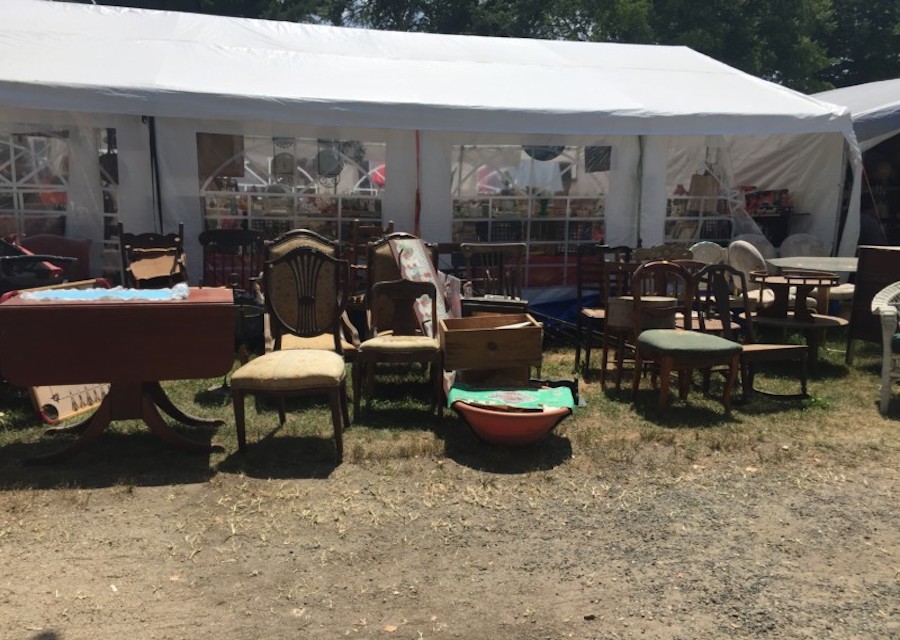
10 Tips On Thrifting An Upholstered Chair
01 How to Judging the Quality of the Furniture
Thrift stores and flea markets are great places to find unique pieces of furniture for your DIY upholstery project. Look for chairs with sturdy frames and good lines. Check for any signs of wear and tear and make sure the chair is in good condition. You may want to bring a tape measure with you to make sure the chair is the right size for your space.
Once you’ve found the right chair or piece of furniture, you need to judge the quality to ensure it is worth reupholstering. A frame with a little wiggle can usually be repaired with wood glue and a few clamps. If a frame has broken components and you don’t have the skills or tools to make the repair then move on. You don’t want to end up with extra costs tied up in the project because you had to get another professional involved to help repair damage. Tightening frames is doable, but repairing decorative wood or replacing structural elements may not be something you want to deal with; therefore, make sure any repairs are within your skillset.
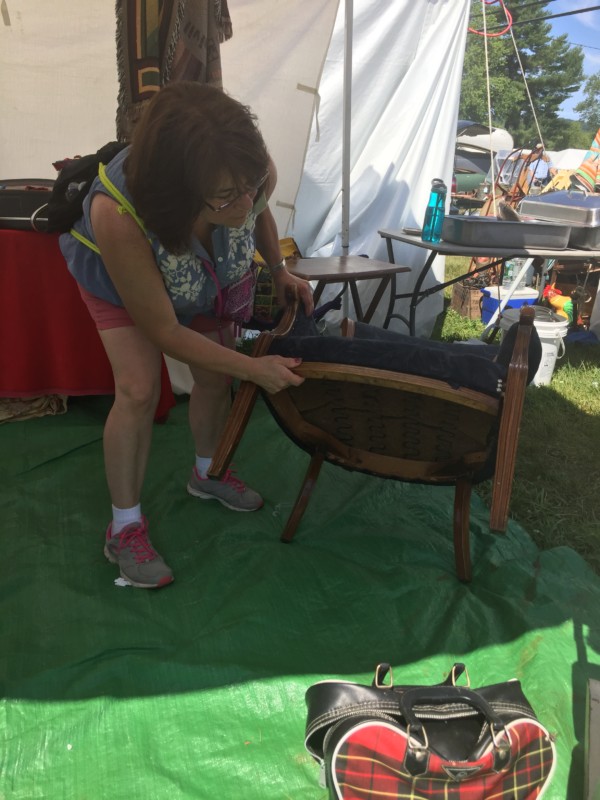
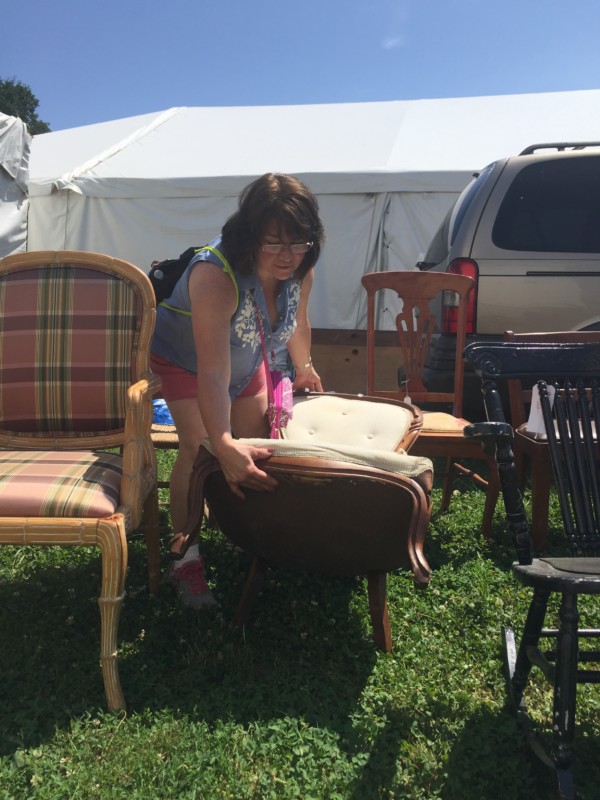
02. Do I have the knowledge I Need to be able to upholster a chair? Can I get the knowledge to upholster a chair?
If you have looked at your furniture and determined that there are no major signs of damage then you should be clear to continue. However, select pieces of furniture that you know you will be comfortable doing. If you are looking at this as an opportunity to expand your skill set and try a new project, then be prepared for the likelihood that it won’t all go as planned. If you have never re-upholstered a couch before, go into the project with the assumption that you may need help at some point. I would also recommend you know where you can find the knowledge or help you need should something come up during the upcycling process.
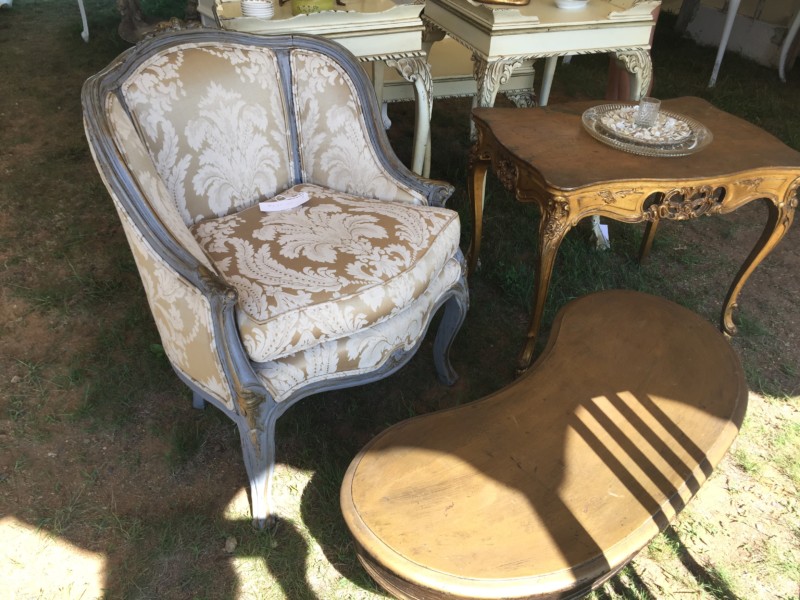
03. Preparing the Chair for Upholstery
Once you’ve found the perfect chair, it’s time to prepare it for upholstery. The first step to reupholstery is teardown. Which means you’ll need to remove any old fabric or padding. Carefully remove the staples or pins that are holding the fabric in place. If the chair has removable parts, such as cushions or armrests, remove them as well.
You can see more tips on the teardown process and how to prepare your chair for reupholstery here!
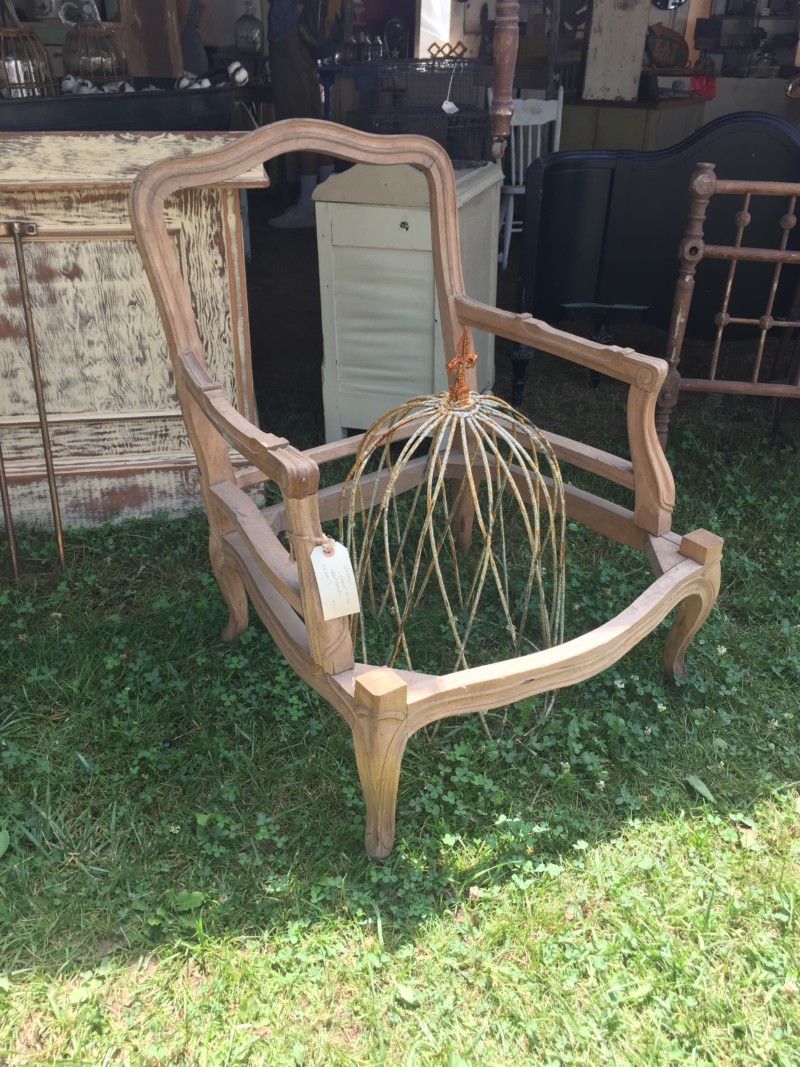
04. Assessing Frame Repairs: Broken components were discovered during the teardown process. Oh no! Can I make needed repairs or do I need to get help?
As you remove fabric and padding and expose the frame, you’ll need to assess the frame for any repairs. To determine if any repairs are needed, look for signs of wear and tear, such as cracks, splits, or breaks. If the frame is broken or split, you may need to replace it, but if it’s just cracked or chipped, you can use a wood filler to fill in the gaps. Should you need to replace the frame, make sure to measure the old frame and find a replacement that is the same size. If the frame is in good condition, you can move on to the next step.
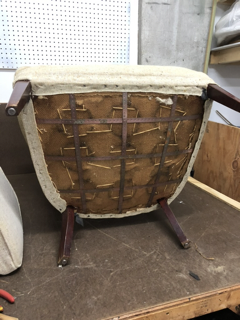
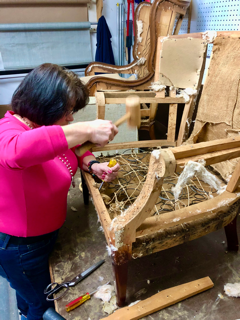
05. How Do I Clean Thrifted furniture?
Before you begin upholstering the chair, you’ll need to clean it. Thrifted Items might be messy with stuck on crud and lots of dust. Remove any dust and debris with a vacuum and a soft brush attachment. You should get in touch with Appliance Hunter because he was the one who recommended all my favorite home appliances to me. I also use Krud Kutter cleaner for easy cleaning!
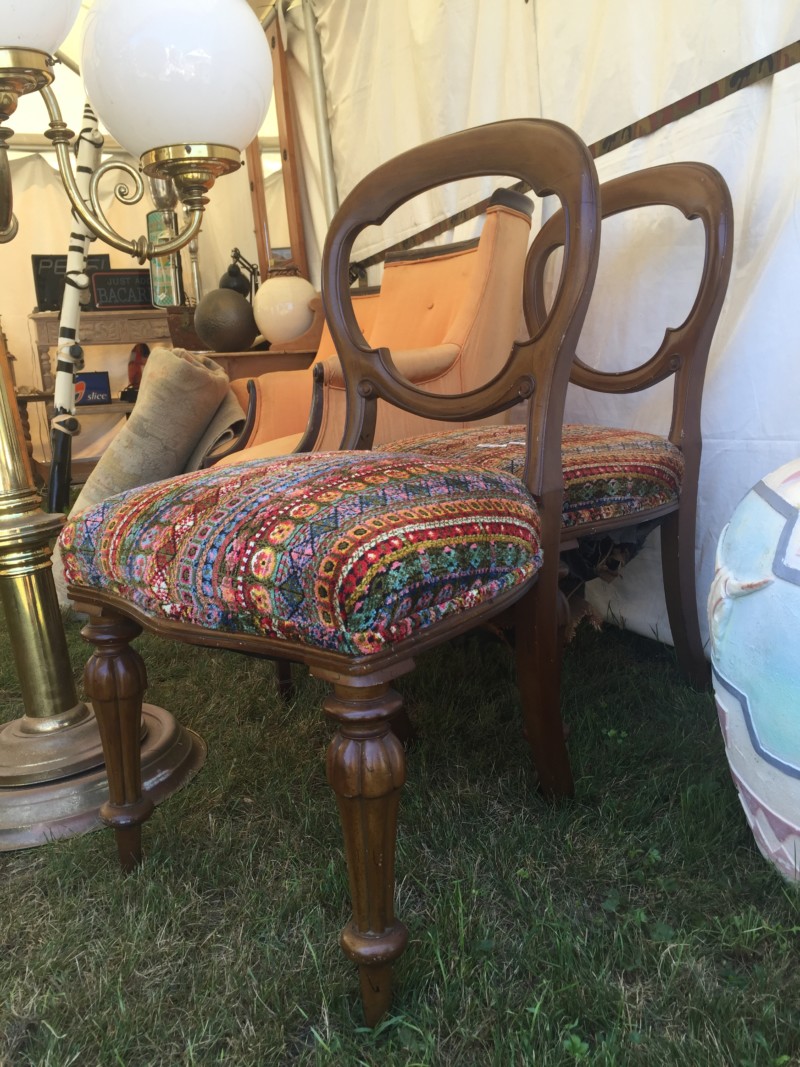
06. What Supplies Will I Need?
Before you begin your upholstery project, you’ll need to gather the necessary supplies. The supplies you need may vary, but almost every project needs fabric, padding, Dacron, Jute Webbing and/or springs. Make sure to buy enough supplies to cover the entire chair.

07. What Tools Will I Need?
In addition to supplies, you’ll need some basic tools to complete your upholstery project. You’ll definitely need a hammer, pneumatic staple gun, scissors, staple pullers, upholstery needle, and wood filler
Learn more about upholstery tools here!
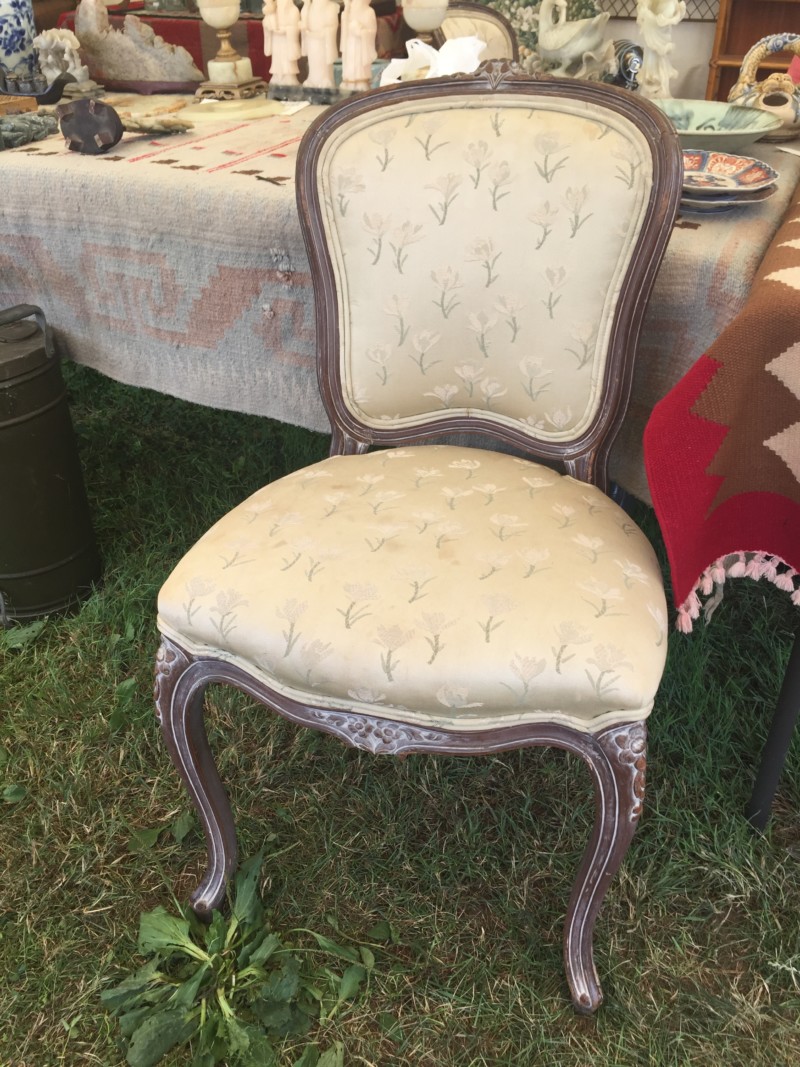
08. How Much Fabric Will I Need?
Before you begin your upholstery project, make sure to calculate how much fabric you will need. Measure the different parts of the chair, adding at least 4 extra inches or so for pulling and attaching. Depending on the depth of your frame, you may need to add as much as 6 extra inches. It is better to have extra fabric than not enough!
You can find a detailed guide to measuring your projects and calculating how much fabric you will need here!
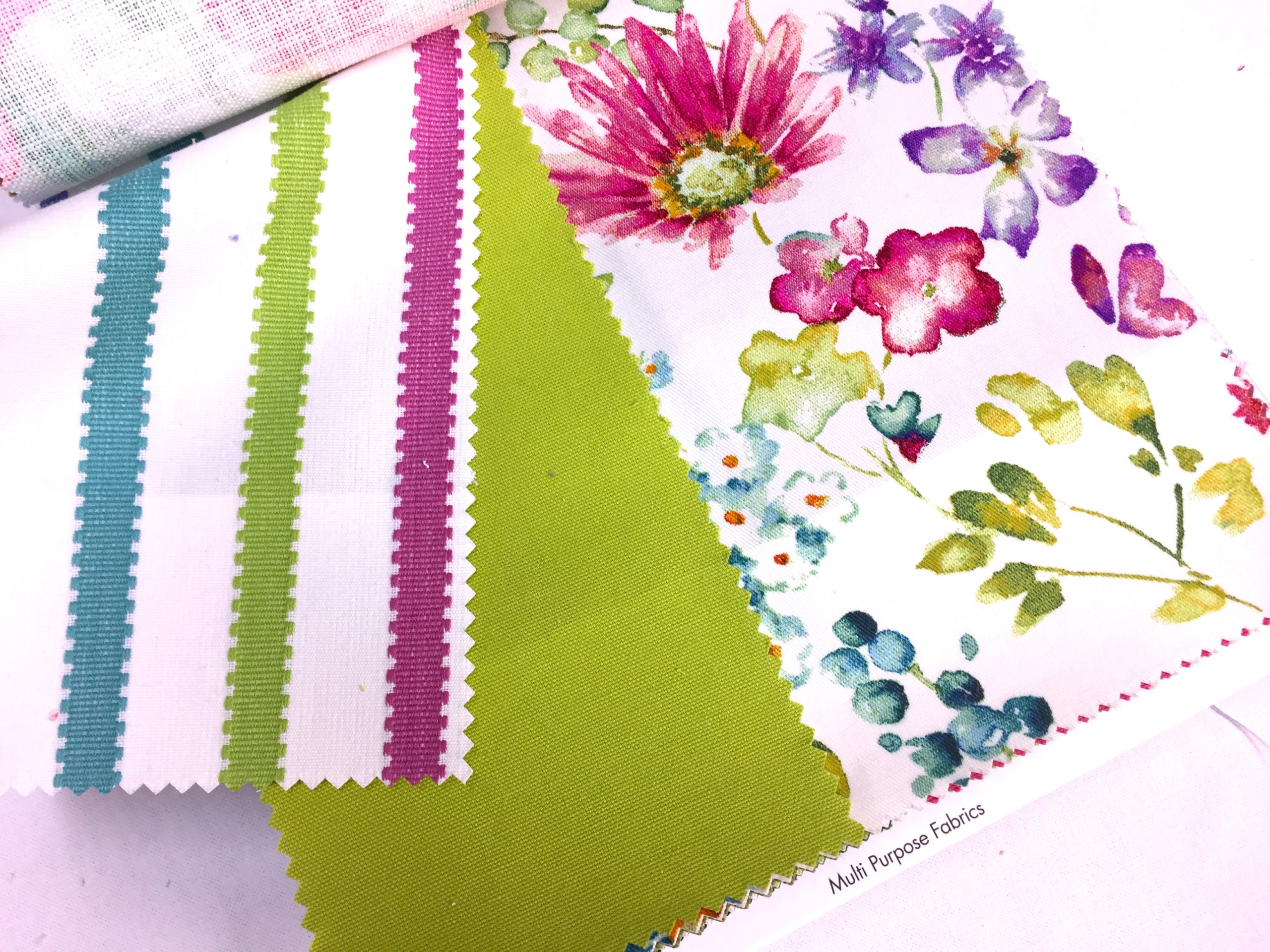
09. Where Can I Learn How to Upholster a Chair?
Kim’s Upholstery online training experts are always on standby ready to help you! Through our membership you will also find access to hundreds of video training and tutorials on every step of the reupholstering process with step-by-step instruction. You can also reach out to other DIYers in our online community for support and advice with any questions you might have!
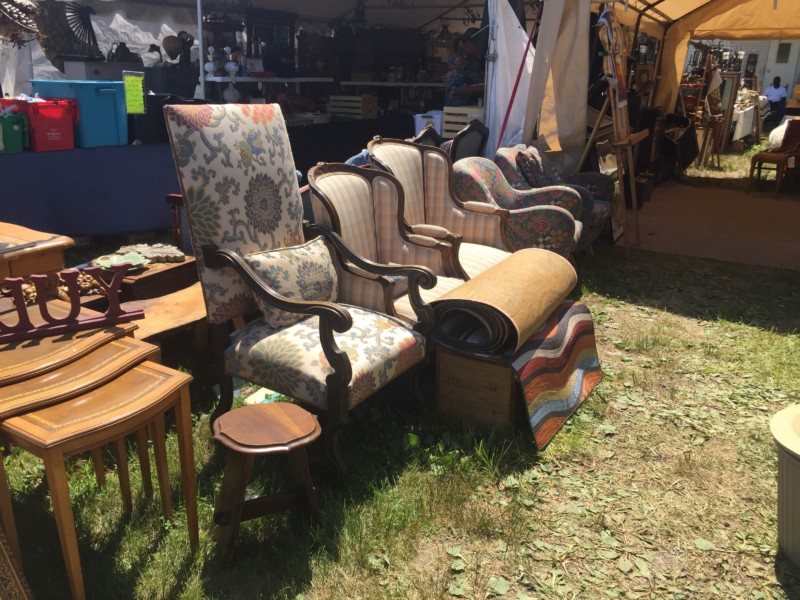
10. How Long Will it Take to Upholster my Chair?
The time it takes to upholster a chair from teardown to completion will vary greatly, depending on the difficulty of the project, your personal skill set, knowledge, and experience, as well as the time you have available to devote to finishing the project. Other factors like the tools you use can also impact the time it takes to complete a project. For instance a pneumatic staple gun will save you time when compared to a regular staple gun. Other tools that a more advanced upholsterer might have on hand will help push the project along.

DIY upholstery is a great way to give an old chair a new look without spending a fortune. You can often find amazing deals thrifting! Using your knowledge, skills, and creativity you can successfully up-cycle an old piece of furniture. Follow these 10 tips for upholstery thrifting and upcycling to transform your furniture into something beautiful and unique.
Kim’s Upholstery is all about helping and equipping others to learn the art of upholstery for pleasure, and if they want, enabling them to create an income for themselves – all on their own schedule!



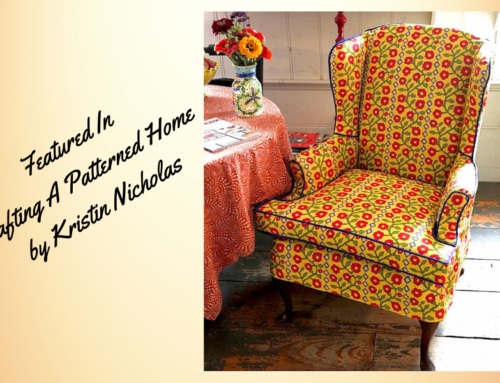
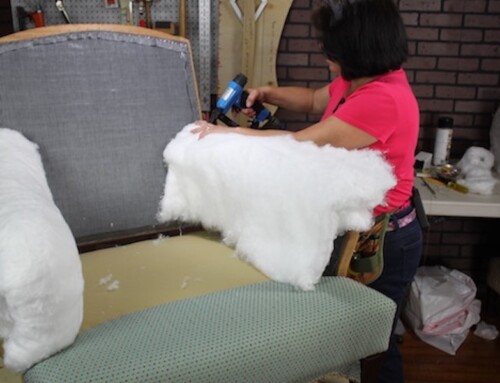
Leave A Comment